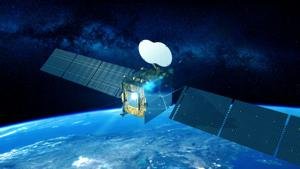Quantum satellites represent an exciting leap forward in secure communication technology, harnessing the fascinating principles of quantum mechanics to revolutionise data transmission security. By tapping into the unique phenomena of the quantum realm, these satellites are set to reshape encryption methods, ensuring that our communications remain safe even in an era of increasing computational power. Join us on an inspiring journey as we explore quantum satellites, their remarkable features, applications, and the challenges they are working to overcome.
Understanding Quantum Satellites
At their core, quantum satellites are advanced communication satellites that utilise the principles of quantum physics to safeguard their signals. Their mission is twofold: Boosting Signal Security: By applying the principles of quantum mechanics, these satellites provide robust protection against the potential threats posed by quantum computing.
Enabling Quantum Key Distribution (QKD): They facilitate unbreakable encryption through QKD, allowing for the secure transmission of encryption keys while simultaneously detecting any attempts at eavesdropping.
Quantum satellites harness a variety of unique quantum phenomena, including:
- Quantum Entanglement: – This fascinating phenomenon connects particles, such as photons, instantaneously, allowing the state of one particle to influence another, no matter the distance between them. This principle is key to establishing secure communication channels that span great distances.
- Quantum Measurement:
- Any effort to measure a quantum state alters quantum systems. This inherent characteristic ensures that any eavesdropping attempts during communication can be detected immediately, providing an opportunity to halt potentially compromised exchanges.
Exciting Applications
Quantum satellites open up an array of applications that enhance both security and efficiency in communication systems:
- Long-Distance Communication:
Traditional ground-based QKD systems are hampered by noise and signal degradation in optical fibres. Quantum satellites can transmit keys through free space, overcoming these limitations and allowing for secure communication across significantly longer distances.
Global Quantum Networks:
By connecting local ground-based quantum networks, quantum satellites are laying the groundwork for global quantum networks. This interconnected infrastructure strengthens security and extends the reach of secure communications worldwide.
3. Advanced Cryptography: The integration of QKD with existing cryptographic frameworks enhances encryption protocols, increasing their resistance to threats from quantum computing.
- Safeguarding Critical Infrastructure:
– Quantum satellites are pivotal in securing communication channels for vital sectors such as finance, healthcare, and national defence.
Remarkable Developments
China’s Pioneering Initiatives:
– China’s groundbreaking quantum satellite, Micius, successfully showcased long-distance QKD and quantum teleportation, positioning the country at the forefront of satellite-based quantum communication technologies.
- Emerging Innovations:
– Advanced satellites like Quantum Dragon are introducing impressive new features, including higher operational altitudes for expanded coverage and real-time data transfer capabilities.
Navigating Challenges
While the potential of quantum satellites is immense, several challenges must be addressed:
- Technical Obstacles:
– Channel Loss and Signal Degradation: Factors like atmospheric interference and optical noise can affect the clarity of quantum signals.
Quantum State Preservation: Keeping quantum states intact during transmission is crucial, but it presents significant technical hurdles.
- Operational Hurdles:
Cost and Complexity: The development and deployment of quantum satellites entail considerable expenses and require specialised expertise.
Limited Visibility: Satellites in low Earth orbit have brief visibility windows with ground stations, which can restrict opportunities for data transmission.
- Infrastructural Considerations:
-Dependence on Trusted Nodes: Many QKD systems require trusted nodes for secure communication, potentially introducing vulnerabilities.
Regulatory and Policy Challenges: Space operations and international cybersecurity agreements can complicate the deployment of these innovative technologies.
Looking Ahead
The emergence of quantum satellites marks a transformative step toward establishing a global infrastructure for quantum communication. By addressing current challenges, these systems promise to revolutionise secure communications across numerous sectors. It’s an exhilarating time for collaboration, and with ongoing technological advancements, we are just beginning to unlock the incredible potential of quantum satellites!



